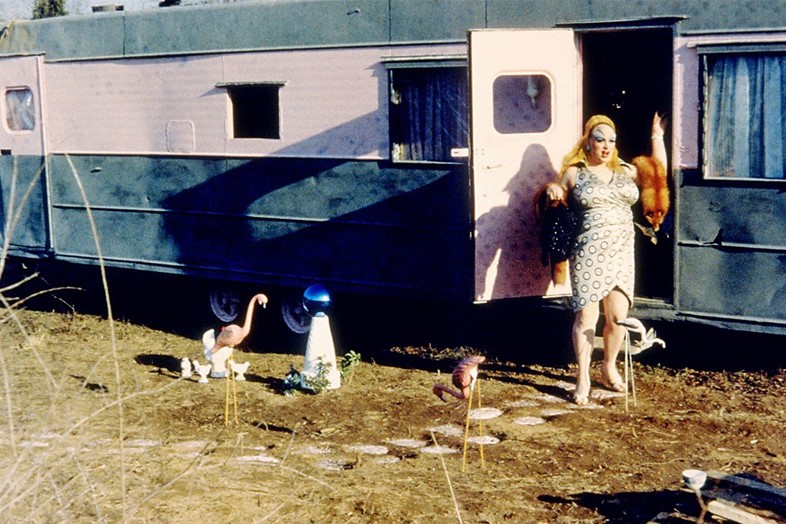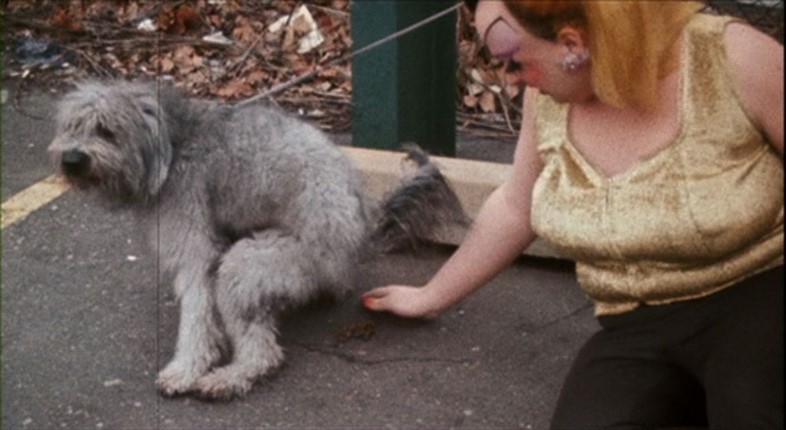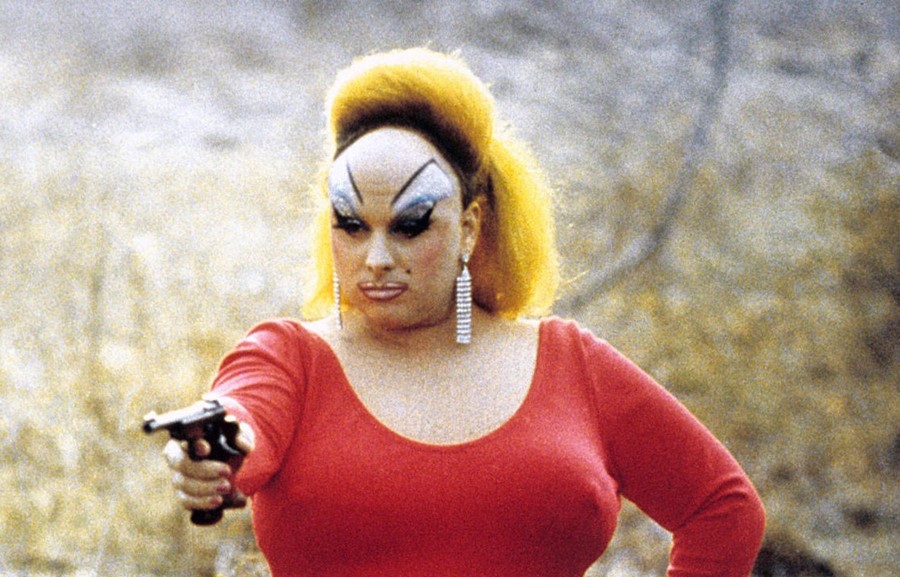As John Waters’ iconic Pink Flamingos turns 20 years old, we examine the enduring power of its provocative protagonist, Babs Johnson, as played by Divine
“Watch as Divine proves she is not only the filthiest person in the world, she is also the filthiest actress in the world. What you are about to see is a real thing.” This is the final line delivered by director and narrator John Waters before Divine eats dog shit. It is arguably not the most controversial scene in Pink Flamingos (1972) – although measuring controversiality with any Waters film seems trivial, as that is partially the point – but it is totally monstrous, and therefore the most memorable.
This act, however, is only part of the Waters carnival, pushing our squeamishness to the brink – it serves as a clever allegory for the trash goddess herself. The scene not only teases the notion that the consumption of bodily excrements is one of our strongest taboos, but also consumption as vanity, excess and extremity. All of which, Divine is. Her behaviour is shocking and unlawful, but she’s fabulous in the face of it. Here, as Pink Flamingos celebrates 20 years since its UK release on July 2, we honour Divine’s Babs Johnson as a style triumph, an icon for queerness, for being both an actress and the “real thing”, and of course as “the filthiest person in the world”.

The Signature Style
Our first glimpse of Divine – or her alias, Babs Johnson – is of her red painted toenails sliding into white, fluffy, open-toe heels, in front of a swathe of leopard-print bedsheets and a zebra carpet. This one shot comprises every element of Divine’s style: showy, bold, elegant, excessive, glamorous, and bad taste. Throughout the film we experience Divine in each of these glorious sartorial states.
“You sure are dressed up Babs. You look real pretty,” Cotton tells her before she heads downtown wearing a silver 60s-style dress and fox-fur stole – complete with feet, tail and head. It’s the ultimate in night-out ensembles, and walking down the street people turn to look at her, while Little Richard’s A Girl Can’t Help It (1958) plays, her soundtrack. But Divine is never one to capitulate to society’s sartorial codes, and so it doesn’t take long before things get filthy – she hides a raw steak between her legs, before relieving herself on the lawn of a stately home.
Divine may be an infamous criminal but she is also the devoted carer of her mother, Miss Edie (Edith Massey), and a mother herself – a role which demands a domestic dresscode. While cooking dinner, she wears a leopard print bra, black trousers and a full face of make-up; downtime Divine is not about to let herself go. Still, her elaborate wardrobe is a kind of armour, and after her arch-enemies make an affront to her dignity Divine puts it back on proudly. For her birthday party she wears an elegant white and floor-sweeping fishtail dress, with a high neck and open back. She is worshipped and given presents, reaffirming her status and title. When she breaks in to the Marbles’ house, she dresses like a spy – or her version of one, at least – wearing a skin-tight turquoise leotard and a long brown fur coat. For the film’s finale, she dons the iconic red cocktail dress, glistening chandelier earrings and her sparkling silver eyeshadow, marking the trial and execution of her enemies, the Marbles. To the press and the rest of the world, she warns: “I will be queen one day…do not forget – I am Divine”. Your outfit is your armour, she teaches us, and you must use it wisely.

The Modern Manifestation
Babs’ style is equal parts tacky and glamorous. She dresses for herself but also for the occasion, whether that be to fall in love, rescue hostages or commit homicide. And while her appearance is an artwork in and of itself, even Divine is not immune to the draw of fail-safe pieces: attention-seeking jewelled earrings and bracelets, a clutch bag to wave around, and all things fur, from shoes and accessories to coats and her essentials.
It follows then, that those looking to emulate her gravitate towards sparkling accessories and small, handheld bags – the A/W17 collections of the likes of Oscar de la Renta and Saint Laurent provide ample inspiration. As for Divine’s unforgettable red dress? Nobody channels her power quite like Givenchy: for its A/W17 collection the house paid tribute to its newly departed creative director Riccardo Tisci with a series of striking red versions of some of his most iconic looks – it offers cold-shoulder, sheer, ruffled and wrap-around options.
The most readily imitable element of Divine’s look, however, is her make-up: her eyebrows arch to the sky, eyelids shadowed a rich blue, her lips and nails are usually red, and her yellow hair is coiffed. For A/W17 Tom Pecheux at Chanel borrowed Divine’s black-lined brows, but toned them down to frame the eye and create a 60s look. And if Divine’s chemical-coated hair seems too much of a fire-hazard, Christopher Kane showed how to recreate her coiffed style with a softer and more wispy finish. Although lets face it: Divine subdued simply isn’t Divine at all.
